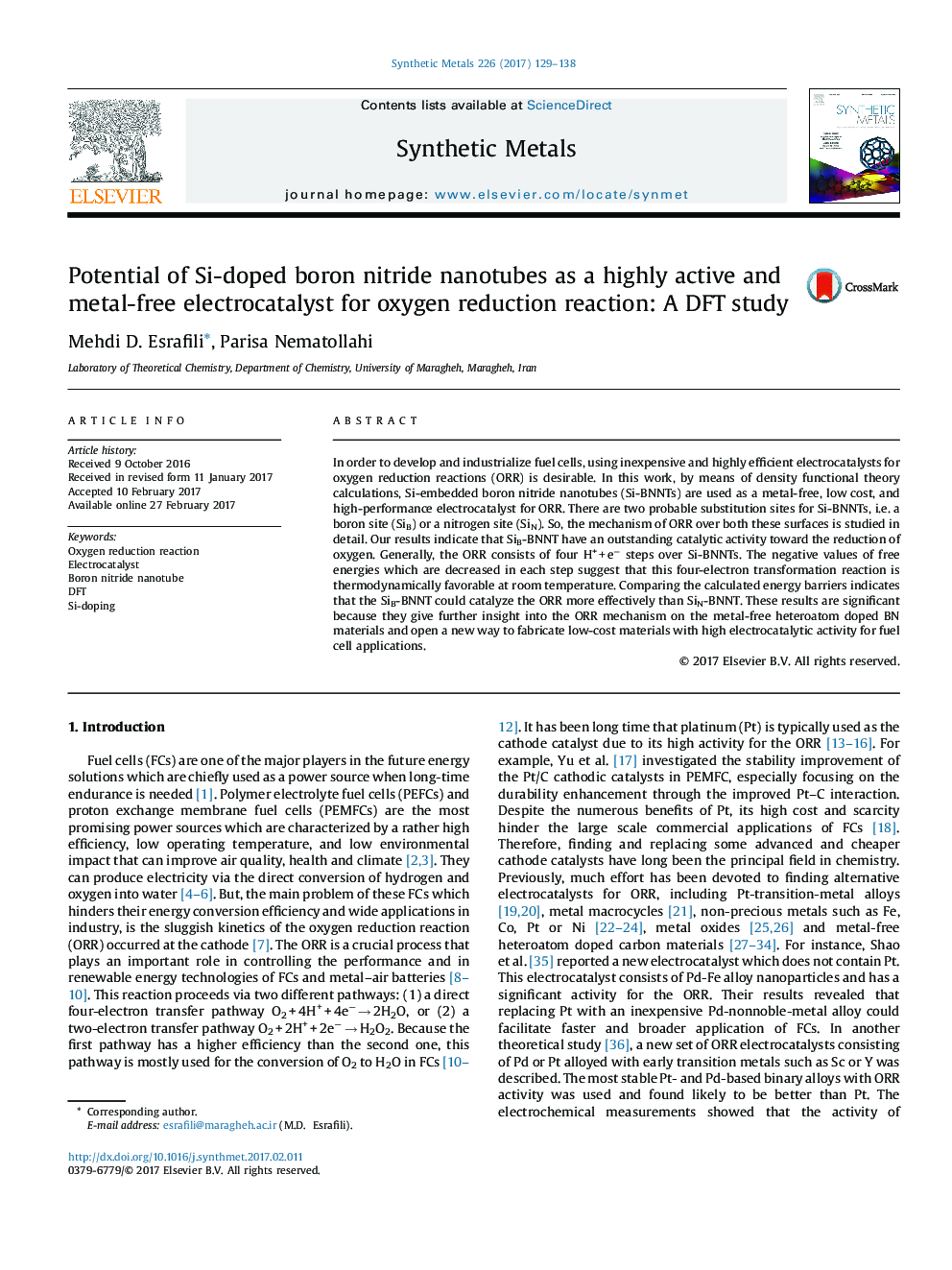| Article ID | Journal | Published Year | Pages | File Type |
|---|---|---|---|---|
| 5435485 | Synthetic Metals | 2017 | 10 Pages |
â¢The ORR mechanism on Si-doped BNNTs is studied.â¢The dissociation process of molecular O2 over Si-doped BNNTs is unfavorable.â¢The ORR consists of four H+ + eâ steps.
In order to develop and industrialize fuel cells, using inexpensive and highly efficient electrocatalysts for oxygen reduction reactions (ORR) is desirable. In this work, by means of density functional theory calculations, Si-embedded boron nitride nanotubes (Si-BNNTs) are used as a metal-free, low cost, and high-performance electrocatalyst for ORR. There are two probable substitution sites for Si-BNNTs, i.e. a boron site (SiB) or a nitrogen site (SiN). So, the mechanism of ORR over both these surfaces is studied in detail. Our results indicate that SiB-BNNT have an outstanding catalytic activity toward the reduction of oxygen. Generally, the ORR consists of four H+Â +Â eâ steps over Si-BNNTs. The negative values of free energies which are decreased in each step suggest that this four-electron transformation reaction is thermodynamically favorable at room temperature. Comparing the calculated energy barriers indicates that the SiB-BNNT could catalyze the ORR more effectively than SiN-BNNT. These results are significant because they give further insight into the ORR mechanism on the metal-free heteroatom doped BN materials and open a new way to fabricate low-cost materials with high electrocatalytic activity for fuel cell applications.
Graphical abstractDownload high-res image (124KB)Download full-size image
